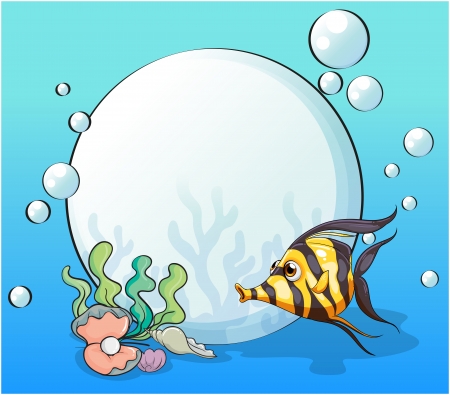1. The Importance of Aquarium Heating
Maintaining a stable water temperature is one of the most important aspects of keeping an aquarium. Fish and other aquatic life are highly sensitive to temperature changes, and sudden fluctuations can cause stress, illness, or even death. A reliable aquarium heater ensures that the water stays within the ideal range for your specific fish species, creating a healthy and stable environment.
Why Stable Water Temperature Matters
Fish are ectothermic, meaning they rely on the surrounding water temperature to regulate their body functions. When the temperature fluctuates too much, it can weaken their immune systems, making them more susceptible to diseases. Additionally, different species have specific temperature requirements, so maintaining consistency is crucial for their overall well-being.
Ideal Temperature Ranges for Common Aquarium Fish
Different fish species thrive in different temperature ranges. Here’s a quick reference guide to help you determine the best temperature for your aquarium inhabitants:
| Fish Type | Ideal Temperature Range (°F) |
|---|---|
| Betta Fish | 78-82°F |
| Tropical Community Fish (e.g., Tetras, Guppies) | 74-80°F |
| Cichlids | 76-82°F |
| Goldfish | 65-75°F |
| Saltwater Fish | 75-80°F |
The Role of Heaters in Maintaining Stability
An aquarium heater helps maintain a consistent water temperature by automatically adjusting to changes in room temperature. This is especially important in colder climates or during winter months when indoor temperatures can fluctuate significantly. Choosing the right heater size and type will ensure that your fish remain comfortable and stress-free.
2. Types of Aquarium Heaters
Choosing the right heater for your aquarium depends on several factors, including tank size, fish species, and setup preferences. There are several types of aquarium heaters, each designed for specific use cases. Below, well explore the most common types and their best applications.
Submersible Heaters
Submersible heaters are one of the most popular choices for home aquariums. These heaters are fully submerged in water and typically attach to the inside of the tank using suction cups. They provide even heat distribution and are easy to install.
Best Use Cases:
- Small to medium-sized tanks
- Beginner-friendly setups
- Freshwater and saltwater aquariums
In-Line Heaters
In-line heaters are installed outside the aquarium, usually within an external filtration system or sump. Water passes through the heater before returning to the tank, ensuring a consistent temperature without taking up space inside the aquarium.
Best Use Cases:
- Larger aquariums
- Aquariums with external canister filters
- Advanced setups where space inside the tank is a concern
Substrate Heaters
Substrate heaters consist of heating cables placed beneath the gravel or sand in an aquarium. These heaters provide gentle warmth from the bottom up, promoting plant growth by keeping roots warm and encouraging natural water circulation.
Best Use Cases:
- Planted tanks with live aquatic plants
- Aquariums requiring subtle, consistent heating
- Advanced aquascaping setups
Comparison of Aquarium Heater Types
| Heater Type | Installation Location | Best For | Pros | Cons |
|---|---|---|---|---|
| Submersible Heater | Inside the tank, fully submerged | Small to medium tanks, general use | Easy to install, even heat distribution, affordable | Takes up space inside the tank |
| In-Line Heater | External filtration system or sump | Larger tanks, advanced setups | Keeps heater out of sight, consistent heating, ideal for big tanks | Requires external filter or sump, higher cost |
| Substrate Heater | Beneath gravel or sand substrate | Planted tanks, natural heating needs | Encourages plant growth, discreet heating method | Difficult to adjust temperature, not suitable for all tanks |
Selecting the right heater type depends on your aquariums needs and your personal preferences. Whether you opt for a simple submersible heater or a more advanced in-line system, maintaining a stable temperature is essential for the health of your aquatic life.

3. Choosing the Right Heater for Your Tank
Selecting the right heater for your aquarium is essential to maintaining a stable and healthy environment for your fish. There are several factors to consider, including tank size, wattage requirements, and the species of fish you keep.
Tank Size and Wattage Requirements
The size of your aquarium determines how powerful your heater should be. A general rule of thumb is to use 5 watts per gallon of water. Heres a quick reference table to help you choose the right wattage:
| Aquarium Size (Gallons) | Recommended Heater Wattage |
|---|---|
| 5-10 gallons | 25-50 watts |
| 10-20 gallons | 50-100 watts |
| 20-40 gallons | 100-200 watts |
| 40-75 gallons | 200-300 watts |
| 75+ gallons | 300+ watts (consider multiple heaters) |
The Type of Fish in Your Tank
The ideal water temperature depends on the species of fish in your aquarium. Some tropical fish require warmer temperatures, while others thrive in cooler waters. Here are a few common temperature ranges:
| Fish Type | Recommended Temperature (°F) |
|---|---|
| Tropical Fish (e.g., Betta, Tetras) | 75-80°F |
| Cichlids | 76-82°F |
| Goldfish | 65-75°F (may not need a heater) |
| Shrimp & Snails | 72-78°F |
| Mediterranean/Coldwater Fish (e.g., White Cloud Minnows) | < 72°F (may not need a heater) |
The Importance of Multiple Heaters for Large Tanks
If you have a large tank (over 50 gallons), using multiple heaters can help distribute heat evenly and prevent temperature fluctuations. Placing heaters at opposite ends of the tank ensures that no area gets too cold or too hot.
Aquarium Heater Types to Consider
Aquarium heaters come in different styles, each with its own advantages:
- Submersible Heaters: Fully submerged in water; great for even heating.
- Hang-On Heaters: Attach to the side of the tank but may not heat as evenly.
- Inline Heaters: Installed in an external filter system; useful for large tanks.
- Sump Heaters: Used in sump systems for larger aquariums.
- Aquarium Heating Mats: Good for small tanks or specific species like shrimp.
Thermostat and Temperature Control Features Matter
A good heater should have an adjustable thermostat so you can fine-tune the temperature. Some advanced models include digital displays and external controllers for more precise adjustments.
Avoid Overheating and Fluctuations
An aquarium thermometer is essential to monitor the water temperature regularly. Sudden changes can stress or harm your fish, so always check your heater’s performance.
Selecting a Reliable Brand
Certain brands have better reputations for reliability and durability. Research customer reviews before making a purchase to ensure youre getting a high-quality product that wont fail unexpectedly.
Selecting the right heater requires careful consideration, but by understanding these key factors, you can create a stable and comfortable environment for your aquatic pets.
4. Proper Heater Placement and Installation
Placing and installing your aquarium heater correctly is essential for maintaining a stable water temperature. A poorly positioned heater can lead to uneven heat distribution, creating cold spots that may stress or harm your fish. Below are the best practices for proper heater placement and installation.
Choosing the Right Location
The location of your heater plays a crucial role in ensuring even heat distribution. Here are some key points to consider:
- Near Water Flow: Position the heater close to a filter outlet or air stone to help circulate warm water throughout the tank.
- Avoid Direct Contact with Decorations: Placing the heater too close to decorations or substrate can block heat flow and create hot spots.
- Submersible vs. Hang-On Heaters: Fully submersible heaters should be placed horizontally or at an angle, while hang-on models should follow manufacturer guidelines.
Installation Best Practices
Follow these steps to install your heater safely and effectively:
- Check for Damage: Before installation, inspect the heater for cracks or defects.
- Attach Securely: Use suction cups or brackets to firmly secure the heater in place.
- Allow Acclimation Time: Place the heater in the tank for 15-30 minutes before turning it on to prevent sudden temperature changes.
- Set the Correct Temperature: Adjust the thermostat based on your fishs needs and monitor closely.
- Use a Thermometer: Always have a separate thermometer to verify accuracy.
Ideal Heater Placement Based on Tank Size
| Aquarium Size | Recommended Heater Placement |
|---|---|
| Small Tanks (10-20 gallons) | One centrally placed heater near a filter outlet |
| Medium Tanks (30-50 gallons) | One or two heaters placed on opposite sides of the tank |
| Large Tanks (55+ gallons) | Two or more heaters evenly spaced across the tank |
Troubleshooting Common Heater Issues
If you notice inconsistent temperatures, consider these solutions:
- Cold Spots: Improve water circulation by adjusting filter flow or repositioning the heater.
- Overheating Areas: Ensure decorations aren’t blocking heat dispersion and check the thermostat settings.
- No Temperature Change: Verify that the heater is plugged in and functioning properly.
Final Tips for Optimal Performance
A well-placed aquarium heater ensures your fish stay comfortable and healthy. Regularly monitor water temperature, clean your heater as needed, and replace it if signs of wear appear. By following these best practices, you can maintain a stable environment for your aquatic pets.
5. Maintaining and Troubleshooting Your Heater
Keeping your aquarium heater in good condition is essential for maintaining a stable environment for your fish. Regular maintenance helps prevent malfunctions and ensures consistent water temperature. Below are some tips on cleaning, monitoring temperature consistency, and identifying common heater issues.
Cleaning Your Aquarium Heater
A dirty heater can become less efficient over time due to algae buildup or mineral deposits. Follow these steps to keep it clean:
- Unplug the Heater: Always disconnect the heater before cleaning to avoid electrical hazards.
- Use a Soft Cloth or Sponge: Gently wipe away any dirt or algae buildup. Avoid using harsh chemicals that could harm your fish.
- Soak in Vinegar for Mineral Deposits: If you notice calcium buildup, soak the heater in a vinegar-water solution for 15-20 minutes, then rinse thoroughly.
- Check for Cracks or Damage: Inspect the heater for any visible cracks or defects before placing it back into the tank.
Monitoring Temperature Consistency
An inconsistent water temperature can stress your fish and lead to health issues. Here’s how to ensure your heater maintains a stable temperature:
- Use a Reliable Thermometer: Place a thermometer on the opposite side of the tank from the heater to check for even heat distribution.
- Monitor Daily: Check the temperature at least once a day to ensure it stays within the desired range.
- Avoid Frequent Adjustments: Once set, leave the heater at a steady temperature to prevent fluctuations.
- Consider a Backup Heater: If you have sensitive species, using two smaller heaters instead of one large one can provide better stability.
Identifying Common Heater Malfunctions
If you notice problems with your heater, its important to diagnose and fix them quickly. Below is a table outlining common issues and potential solutions:
| Issue | Possible Cause | Solution |
|---|---|---|
| No Heat | – Heater is unplugged – Faulty power source – Broken internal components |
– Ensure its plugged in correctly – Try another outlet – Replace if necessary |
| Overheating Water | – Thermostat malfunction – Incorrect wattage for tank size |
– Test with an external thermometer – Replace heater if thermostat is faulty – Use an appropriately sized heater |
| Temperature Fluctuations | – Inconsistent room temperature – Heater cycling on and off too frequently |
– Keep room temperature stable – Use a secondary heater for balance |
| Visible Cracks or Leaks | – Physical damage – Manufacturing defect |
– Immediately remove from tank – Replace with a new unit |
Final Tips for Long-Term Heater Care
- Avoid Exposing to Air: Fully submersible heaters should always remain underwater when powered on.
- Keep Away from Decorations: Placing decorations too close can trap heat and cause uneven heating.
- Test Before Winter: If you live in colder climates, test your heater before temperatures drop significantly.
- Replace When Necessary: Most aquarium heaters last around 2-5 years; replace yours if you notice frequent malfunctions.
A well-maintained aquarium heater ensures your fish stay healthy and comfortable year-round. By following these maintenance and troubleshooting tips, you can prevent common issues and enjoy a stable aquatic environment.


